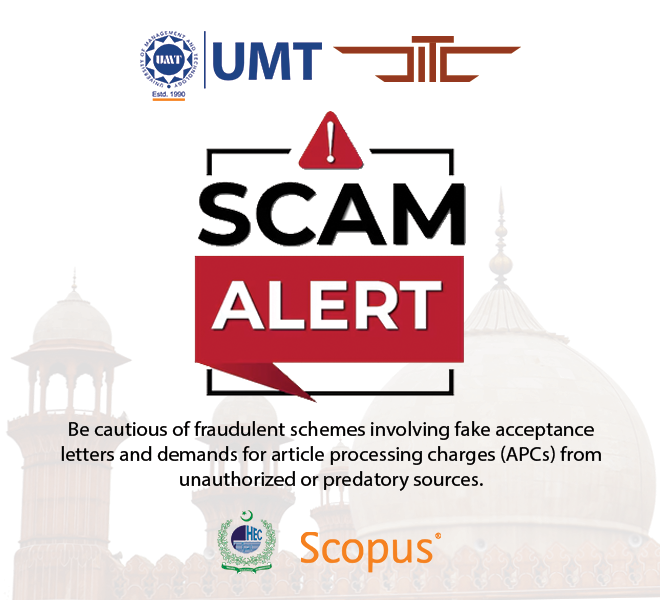The Concept of the ‘Evil’ and the ‘Evil Eye’ in Islam and Islamic Faith-Healing Traditions
Abstract
 Abstract Views: 326
Abstract Views: 326
Evil is a power that may possess a human to commit sins. Evil is all negative, conflicting and opposing to
the all positive ‘good’. Religious descriptions of evil and good often relate it to the opposing forces led by
the Devil and God respectively where human is weak and vulnerable. Arrogance and envy are two satanic
traits that occupy human nature to deviate him from the ‘good’. Islam describes a variety of evil acts that
cause destruction, disobedience, tyranny and hopelessness in human societies. According to Islamic traditions, arrogance and envy are satanic obsessions. The evil eye is one of the evils triggered by envious self
of the human under the influence of the Evil (Satan). Humans, under the obsession of this evil, may bring
harm to their fellow men, intentionally or unintentionally. Since health and prosperity is valuable for survival, the evil eye can destroy them. Humans can overcome these obsessions only with the blessing of God
and invoking their innate righteousness. Humans can protect themselves from the harmful and destructive
effects of the evil eye, if they trust in God and seek His refuge. Islam emphasizes the Quran having healing
and protective powers, and recommends following the Islamic traditions set by the Prophet Muhammad
(SAW) and advised in Quran to gain protection and cure.
Downloads
References
Account of an Ancient Superstition. Mineola, N.Y.: Dover
Publications, 2004.
2
Peace be upon him
3 Douglas, Neil and Wykowski, Terry. From belief to knowledge: achieving and sustaining an adaptive culture in organizations. (Boca Raton, FL: CRC Press, 2011), 27.
4 Al Qur’an, Şād, 38:41
5 Roland Miller, Muslims and the Gospel: bridging the gap:
a reflection on Christian sharing. (Lutheran University
Press, 2005), 54-55.
6
Ibid.
7 Al-Baqara, 2:208; Al-A’raf 7:22
8
Imam Bukhari, Sahih Bukhari, Good Manners and Form
(Al-Adab), Volume 8, Book 73, Number 238
9
al-Baqara, 2:169
10 al-Ma’idah, 5:63
11 Hud, 11:85
12 Al-Isra, 17:32
13 Al-Ma’idah, 05:91
14 At-Taghabun 64:11
15 al-Baqara, 02:155
16 al- ‘Araf, 07:168
17Al-Qamar, 54:34
18Al-A’raf, 07:155
19 An-Nisa, 04:28
20 Al-Insan, 76:2-3
21 Al-Balad, 90:10
22 As-Shams, 91:8
23Al-Baqarah, 2:256
24 Al-A’raf 07:11-13
25 Ibn Kathir, 2003, Tafsir (Commentary on Quran) by Ismail bin Umar bin Kathir, known as Tafsir Ibn Kathi is the
most famous and most widely used explanation of the
Holy Quran. I am using the abridged version of this tafsir
translated by Safiur-Rahman Mubarakpuri and published
by Darussalam Publishers, Riyadh, Saudi Arabia.
26 Al-A’raf, 07:16-18
27 Mary Ayers, Mother-Infant Attachment and Psychoanalysis: The Eyes of Shame. (Hove: Brunner-Routledge, 2003)
28 Helmut Schoeck, The Evil Eye: Forms and Dynamics of a
Universal Superstition. In Alan Dundes (Ed.), The Evil
Eye: A Casebook. (Madison, Wis: University of Wisconsin Press, 1992)192-200.
29 Stewart. Woodburne, The Evil Eye in South Indian Folklore. In Alan Dundes (Ed.), The Evil Eye: A Casebook.
(Madison, Wis: University of Wisconsin Press, 1992) 55-
65
30 Sunil Sehgal, Encyclopaedia of Hinduism, (New Delhi:
Sarup & Sons, 1999); Alex Carmine, Dan Brown's "The
Lost Symbol": The Ultimate Unauthorized and Independent Reading Guide. (London: Punked Books, 2009).
31 Migene Gonzalez-Wippler, The Complete Book of Amulets
& Talismans. Woodbury, MN: Llewellyn Worldwide,
2003
32 Maurice Bloomfield, Hymns of the Atharva-Veda. (New
Delhi: Atlantic Publishers, 1990), 39
33 Rivka Ulmer, The evil eye in the Bible and in rabbinic
literature, (Hoboken, N.J.: KTAV Pub. House, 1994), 5.
34 Shumel Goldin, Unlocking the Torah Text: An In-depth
Journey Into the Weekly Parsha. (Shmot. Jerusalem:
Gefen Books, 2010)
35 Yehoshua Karsh, and Benzion. Bamberger, “Ask The
Rabbi”. Edited by Moshe Newman. Ohr Somayach International. Issue # 51. 1995. Retrieved from
http://ohr.edu/ask/ask051.pdf
36 Mathew 6:23 [online]
http://www.blueletterbible.org/Bible.cfm?b=Mat&c=6&t=KJV#comm/23 ; Luke 11:34
[online] http://www.blueletterbible.org/Bible.cfm?b=Luk&c=11&v=1&t=KJV; James 3:16
[online] http://www.blueletterbible.org/Bible.cfm?b=Jam&c=3&t=KJV; Mark 7:22-23
[online] http://www.blueletterbible.org/Bible.cfm?b=Mar&c=7&t=KJV#comm/22

This work is licensed under a Creative Commons Attribution 4.0 International License. Authors retain copyright and grant the journal right of first publication with the work simultaneously licensed under a Creative Commons Attribution (CC-BY) 4.0 License that allows others to share the work with an acknowledgement of the work’s authorship and initial publication in this journal.








